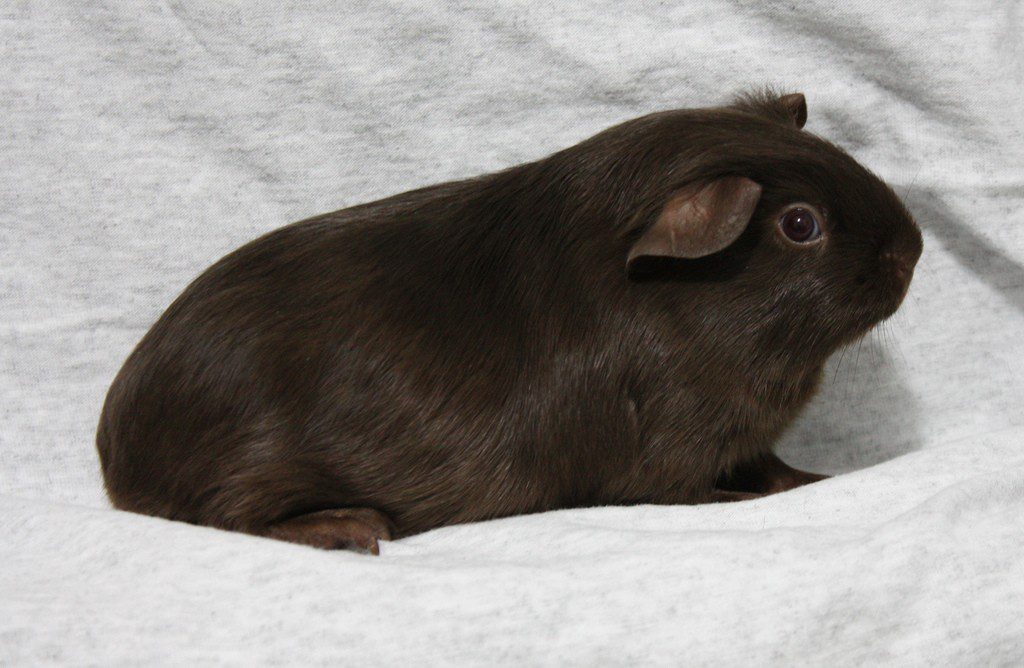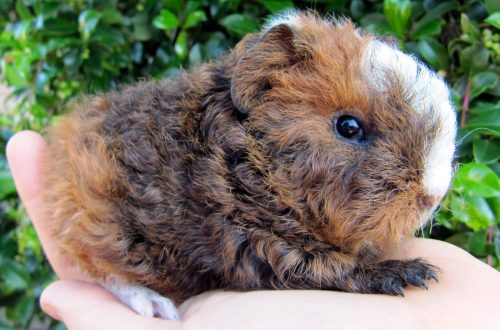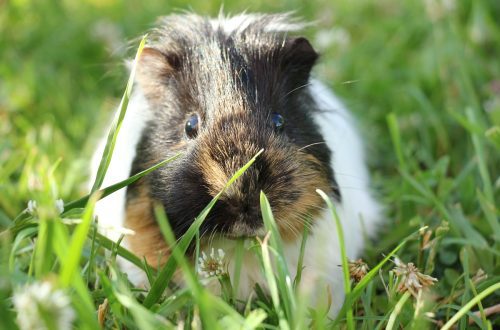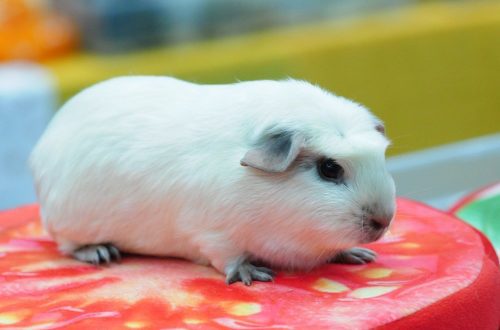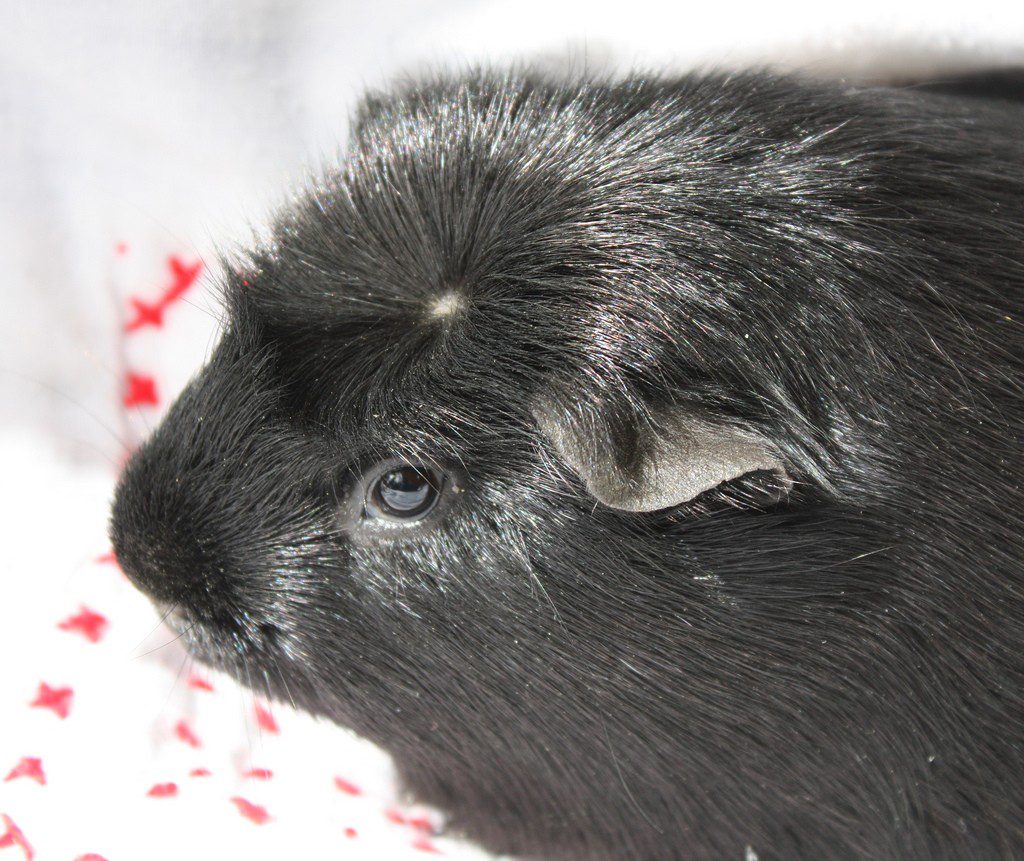
Satin guinea pig
Of all the breeds of pigs that have appeared in recent times, sateen pigs have had the greatest impact on pig production in general. Some believe that this breed has the greatest potential. No one who has seen satins can resist their beauty and charm.
Of all the breeds of pigs that have appeared in recent times, sateen pigs have had the greatest impact on pig production in general. Some believe that this breed has the greatest potential. No one who has seen satins can resist their beauty and charm.

Contents
From the history of satin pigs
In Europe, Satin pigs were imported from America in 1983, and soon captured the imagination of many breeders, and in England became the most popular breed in the Rare Breeds Club of that time. In 1992, this breed received official recognition in the UK and a full show standard, but their popularity has since declined a little. Nevertheless, satin pigs, being assigned to the group of non-selfies (Non-Self), achieved good results at exhibitions and even became owners of the title “Best in Show” (BIS) several times.
In Europe, Satin pigs were imported from America in 1983, and soon captured the imagination of many breeders, and in England became the most popular breed in the Rare Breeds Club of that time. In 1992, this breed received official recognition in the UK and a full show standard, but their popularity has since declined a little. Nevertheless, satin pigs, being assigned to the group of non-selfies (Non-Self), achieved good results at exhibitions and even became owners of the title “Best in Show” (BIS) several times.
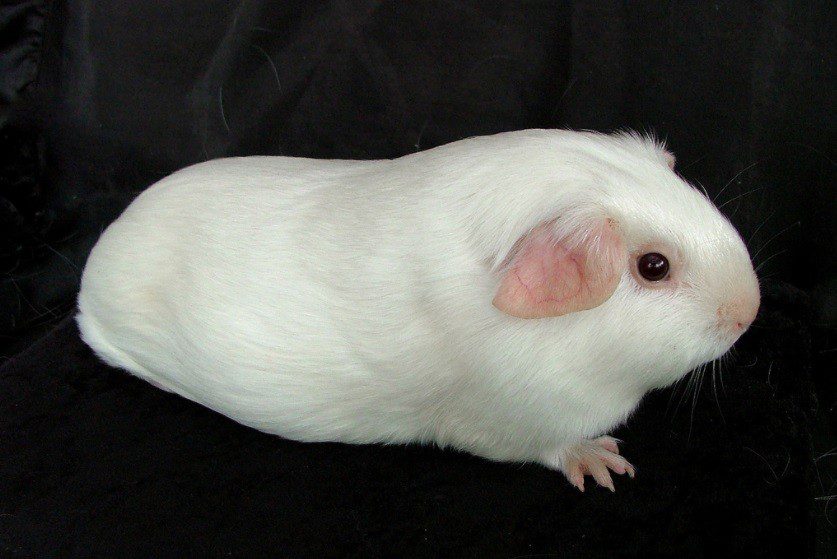
Features of satin guinea pigs
The beauty secret of satin lies in the extraordinary soft silky coat, which shines and shimmers due to the special hollow structure of the hair (each hair has a hollow axis, from root to tip, due to which light easily penetrates through it, which makes the coat unusually shiny). In other words, the satin pig is a special breed that differs from others only in the structure of the coat. Most breeds known today can be satin. Satin gilts can be found in every breed of gilts today, from Abyssinians to Shelties, but it takes a lot of work to get the quality of these satin gilts to match their non-satin counterparts. This is a very long process that requires endless patience to get good results.
If we talk about satin smooth-haired pigs, then the color should fully correspond to the breed, plus a satin sheen should be added to it. The following colors of satins are possible, according to the English breed standard (dark eyes will be called eyes with a color from black to ruby):
- The black: Standard has black eyes, ears and paw pads.
The beauty secret of satin lies in the extraordinary soft silky coat, which shines and shimmers due to the special hollow structure of the hair (each hair has a hollow axis, from root to tip, due to which light easily penetrates through it, which makes the coat unusually shiny). In other words, the satin pig is a special breed that differs from others only in the structure of the coat. Most breeds known today can be satin. Satin gilts can be found in every breed of gilts today, from Abyssinians to Shelties, but it takes a lot of work to get the quality of these satin gilts to match their non-satin counterparts. This is a very long process that requires endless patience to get good results.
If we talk about satin smooth-haired pigs, then the color should fully correspond to the breed, plus a satin sheen should be added to it. The following colors of satins are possible, according to the English breed standard (dark eyes will be called eyes with a color from black to ruby):
- The black: Standard has black eyes, ears and paw pads.
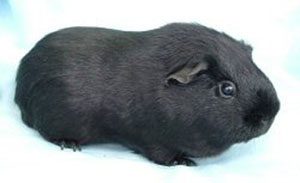
- Brown (chocolate): with dark eyes, ears and paw pads should be brown.
- Brown (chocolate): with dark eyes, ears and paw pads should be brown.
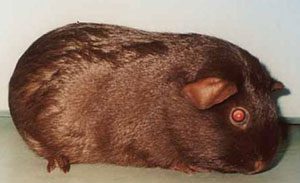
- Lilac (lilac): with pink eyes, ears and paw pads are lilac-pink. This color is obtained by lightening black.
- Lilac (lilac): with pink eyes, ears and paw pads are lilac-pink. This color is obtained by lightening black.
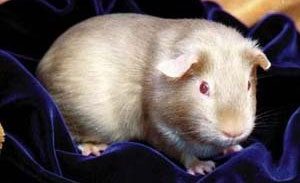
- Beige: with pink eyes, ears and paw pads are pink or beige. This color is obtained by lightening chocolate.
- Beige: with pink eyes, ears and paw pads are pink or beige. This color is obtained by lightening chocolate.
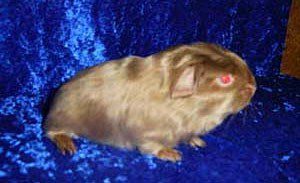
- Red: dark eyes, ears and paw pads dark red or brown.
- Red: dark eyes, ears and paw pads dark red or brown.
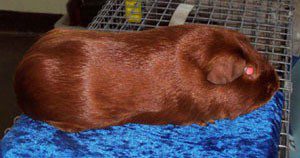
- Golden with dark eyes: Ears and paw pads are pink or gold.
- Golden with dark eyes: Ears and paw pads are pink or gold.
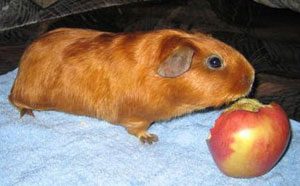
- Golden with red eyes: ears and paw pads pink or gold.
- Golden with red eyes: ears and paw pads pink or gold.
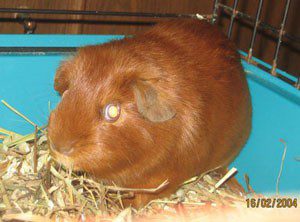
- Buffalo (buff): with dark eyes, ears and pads of wool color (buff) or pink. This color is obtained by lightening the red
- Buffalo (buff): with dark eyes, ears and pads of wool color (buff) or pink. This color is obtained by lightening the red
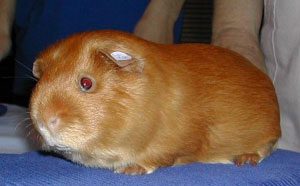
- Saffron: pink eyes, ears and paw pads. This color is obtained by lightening the red, differs from the buffalo in a slightly lighter coat and red eyes.
- Saffron: pink eyes, ears and paw pads. This color is obtained by lightening the red, differs from the buffalo in a slightly lighter coat and red eyes.
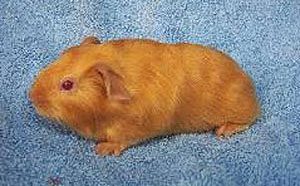
- Cream: with dark eyes, pink or cream ears, pink paw pads. It is the result of more lightening than buffalo.
- Cream: with dark eyes, pink or cream ears, pink paw pads. It is the result of more lightening than buffalo.
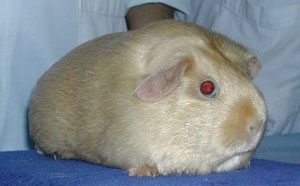
- White with dark eyes: the ears should be pink or white and the paw pads should be flesh pink.
- White with dark eyes: the ears should be pink or white and the paw pads should be flesh pink.
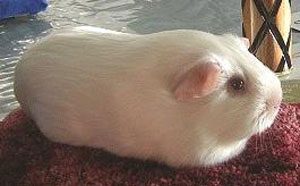
- White with red eyes: the ears should be pink or white and the paw pads should be flesh pink.
- White with red eyes: the ears should be pink or white and the paw pads should be flesh pink.
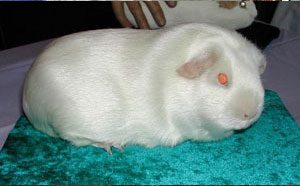
Any breed of guinea pig can be satin. The satin gene affects the structure of the hair and makes it hollow inside, so this hair reflects light in a special way, which gives the coat an excellent shine and gloss. A pig cannot be “partly” satin – the coat is either satin or not. A carrier of the satin gene does not shine like a satin guinea pig, which has nothing to do with satin. Outwardly, the carrier of the satin gene cannot be distinguished from an ordinary guinea pig. It should be noted that in dark-colored gilts it is difficult to determine the satinness, because. a well-groomed coat also shines quite brightly, only this shine is of a different nature – it refers to the grooming of the coat, and not to its structure.
Newborn pigs can immediately be identified as satin by the sheen of the coat, but later – when shedding (somewhere within a month), the satin disappears and becomes difficult to distinguish. In part, satininess can be determined by the sheen of the coat on the belly. Subsequently, satin is restored, by about six months of life: first, satin appears in individual hairs, then more, and, finally, the mumps becomes shiny and beautiful.
Sometimes, when you look at a satin pig, it seems that the coat has different shades. Most likely, this is caused by the refraction of light at different angles.
Any breed of guinea pig can be satin. The satin gene affects the structure of the hair and makes it hollow inside, so this hair reflects light in a special way, which gives the coat an excellent shine and gloss. A pig cannot be “partly” satin – the coat is either satin or not. A carrier of the satin gene does not shine like a satin guinea pig, which has nothing to do with satin. Outwardly, the carrier of the satin gene cannot be distinguished from an ordinary guinea pig. It should be noted that in dark-colored gilts it is difficult to determine the satinness, because. a well-groomed coat also shines quite brightly, only this shine is of a different nature – it refers to the grooming of the coat, and not to its structure.
Newborn pigs can immediately be identified as satin by the sheen of the coat, but later – when shedding (somewhere within a month), the satin disappears and becomes difficult to distinguish. In part, satininess can be determined by the sheen of the coat on the belly. Subsequently, satin is restored, by about six months of life: first, satin appears in individual hairs, then more, and, finally, the mumps becomes shiny and beautiful.
Sometimes, when you look at a satin pig, it seems that the coat has different shades. Most likely, this is caused by the refraction of light at different angles.
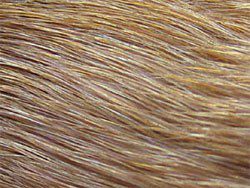
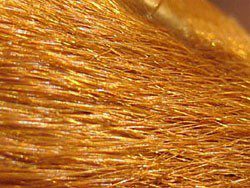
Unlike some characteristics that a guinea pig may have (such as the crested crown), it can carry the satin gene, which can be expressed in offspring many generations later. So, for example, when crossing 2 carriers of the satin gene, a quarter of the children will turn out to be satins, half will be carriers, another quarter will not be carriers; when crossing satin and a carrier of the satin gene, half will be satins, and half will be carriers. In addition to everything, we must remember that only probabilities are given here, i.e. when a carrier of the gene and satin are crossed, all children can turn out to be both satins and carriers. It is impossible to say for sure whether any pig is a carrier of the gene or not: the only way to find out is to have children. If some of them are satin, it means that the pig is a carrier of the satin gene. Be that as it may, if all children are not satin, it does not mean that the mumps is not a carrier of the gene. It sounds paradoxical, but such are the probabilities.
Unlike some characteristics that a guinea pig may have (such as the crested crown), it can carry the satin gene, which can be expressed in offspring many generations later. So, for example, when crossing 2 carriers of the satin gene, a quarter of the children will turn out to be satins, half will be carriers, another quarter will not be carriers; when crossing satin and a carrier of the satin gene, half will be satins, and half will be carriers. In addition to everything, we must remember that only probabilities are given here, i.e. when a carrier of the gene and satin are crossed, all children can turn out to be both satins and carriers. It is impossible to say for sure whether any pig is a carrier of the gene or not: the only way to find out is to have children. If some of them are satin, it means that the pig is a carrier of the satin gene. Be that as it may, if all children are not satin, it does not mean that the mumps is not a carrier of the gene. It sounds paradoxical, but such are the probabilities.
Demonstration of satin pigs at exhibitions
Preparation of pigs for exhibitions is long, and you need to start preparing at least ten days before it. Groom carefully and very carefully – the hair of such pigs is very thin and usually quite long, so gently start grooming with two fingers from the sacrum towards the shoulders, removing dead hair. You have to do this very carefully, otherwise you can remove a lot of unnecessary.
When grooming is completed, the pig must be washed. Use a good shampoo, mild and gentle. Then dry thoroughly, never let the coat dry on its own, because your guinea pig can easily be left without a mark for curly hair. Dry the pig with a hair dryer, and then smooth the coat with a dry towel.
It may be necessary to wash the pig again after a few days, because very often after the first wash the pig develops dandruff, which was not there before! Satins have very dry skin and shampooing only exacerbates this, so don’t expose your guinea pigs very often, otherwise frequent bathing will severely damage the coat. But the wool must be clean to the point of creaking, be prepared for this. It is difficult to achieve this, but all the efforts are worth the moment when your brilliant beauty appears on the exhibition table.
Preparation of pigs for exhibitions is long, and you need to start preparing at least ten days before it. Groom carefully and very carefully – the hair of such pigs is very thin and usually quite long, so gently start grooming with two fingers from the sacrum towards the shoulders, removing dead hair. You have to do this very carefully, otherwise you can remove a lot of unnecessary.
When grooming is completed, the pig must be washed. Use a good shampoo, mild and gentle. Then dry thoroughly, never let the coat dry on its own, because your guinea pig can easily be left without a mark for curly hair. Dry the pig with a hair dryer, and then smooth the coat with a dry towel.
It may be necessary to wash the pig again after a few days, because very often after the first wash the pig develops dandruff, which was not there before! Satins have very dry skin and shampooing only exacerbates this, so don’t expose your guinea pigs very often, otherwise frequent bathing will severely damage the coat. But the wool must be clean to the point of creaking, be prepared for this. It is difficult to achieve this, but all the efforts are worth the moment when your brilliant beauty appears on the exhibition table.
